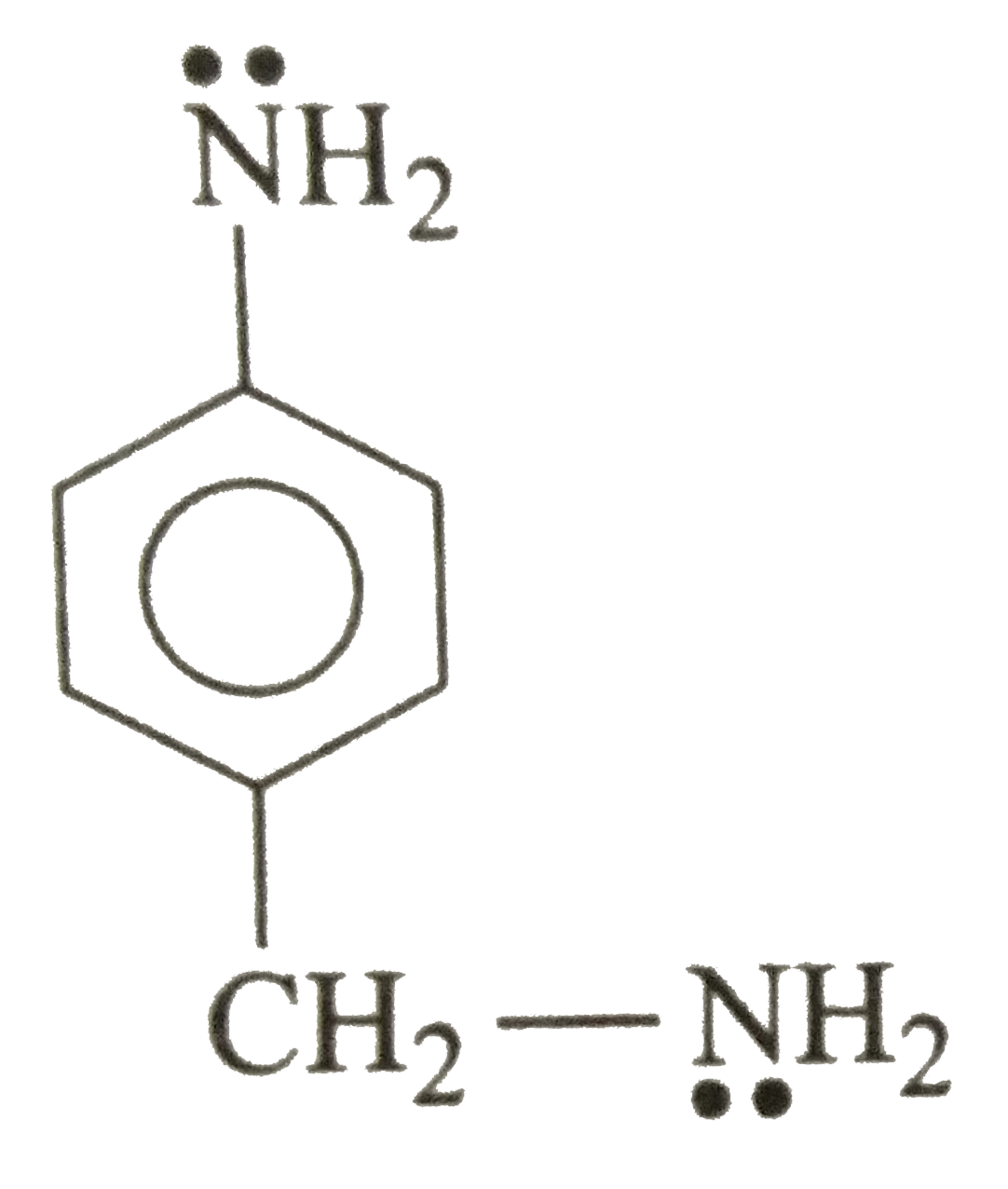CH3D+Cl2hv−−−−→(1 mole) Product
The product is
CH2DCl
CH3Cl
CDCl3
CCl4
The correct Answer is:A
To solve the question regarding the reaction of CH₃D with Cl₂ in the presence of light, we can follow these steps:
Step 1: Initiation of the Reaction
In the presence of light (hv), chlorine (Cl₂) undergoes homolytic cleavage to form two chlorine radicals (Cl·):
Cl2hv−→2Cl⋅
Hint: Remember that light can provide the energy needed to break the Cl-Cl bond, creating radicals.
Step 2: Formation of Alkyl Radical
Next, we have CH₃D (methane with one deuterium atom). The chlorine radical can abstract a hydrogen atom from CH₃D. Since the C-H bond is weaker than the C-D bond, the chlorine radical will preferentially abstract a hydrogen atom (H) rather than deuterium (D). This results in the formation of a methyl radical (CH₂D·) and HCl:
CH3D+Cl⋅→CH2D⋅+HCl
Hint: Consider the bond strengths; the weaker bond will break more easily.
Step 3: Termination of the Reaction
The methyl radical (CH₂D·) can then react with another chlorine radical to form the final product, which is CH₂DCl:
CH2D⋅+Cl⋅→CH2DCl
Hint: Look for the combination of radicals to form stable products.
Final Product
The final product of the reaction is CH₂DCl, which contains one deuterium atom and one chlorine atom.
Summary of the Reaction
The overall reaction can be summarized as:
CH3D+Cl2hv−→CH2DCl+HCl
Conclusion
The product formed from the reaction of CH₃D with Cl₂ in the presence of light is CH₂DCl.
In the presence of light (hv), chlorine (Cl₂) undergoes homolytic cleavage to form two chlorine radicals (Cl·):
Cl2hv−→2Cl⋅
Next, we have CH₃D (methane with one deuterium atom). The chlorine radical can abstract a hydrogen atom from CH₃D. Since the C-H bond is weaker than the C-D bond, the chlorine radical will preferentially abstract a hydrogen atom (H) rather than deuterium (D). This results in the formation of a methyl radical (CH₂D·) and HCl:
CH3D+Cl⋅→CH2D⋅+HCl
The methyl radical (CH₂D·) can then react with another chlorine radical to form the final product, which is CH₂DCl:
CH2D⋅+Cl⋅→CH2DCl
The final product of the reaction is CH₂DCl, which contains one deuterium atom and one chlorine atom.
The overall reaction can be summarized as:
CH3D+Cl2hv−→CH2DCl+HCl
The product formed from the reaction of CH₃D with Cl₂ in the presence of light is CH₂DCl.
Topper's Solved these Questions
- HYDROGENBOOK - AAKASH INSTITUTECHAPTER - HYDROGENEXERCISE - ASSIGNMENT (SECTION - C) (Previous type questions)
27 Videos
- HYDROGENBOOK - AAKASH INSTITUTECHAPTER - HYDROGENEXERCISE - ASSIGNMENT (SECTION - D) (Assertion-Reason Type question)
15 Videos
- HYDROGENBOOK - AAKASH INSTITUTECHAPTER - HYDROGENEXERCISE - ASSIGNMENT (SECTION - A) (objective type question)
30 Videos
- HYDROCARBONSBOOK - AAKASH INSTITUTECHAPTER - HYDROCARBONSEXERCISE - Assignment(Section - D) (Assertion -Reason Type Question)
24 Videos
- M0ck test 26BOOK - AAKASH INSTITUTECHAPTER - M0ck test 26EXERCISE - EXAMPLE
40 Videos
Similar Questions
Knowledge Check
In the reaction
(CH3)3C−O−CH2CH3+HI(1mole)heat−−→ the products formed is (are)A(CH3)3COHandCH3CH2lB(CH3)3ClandCH3CH2IC(CH3)3CIandCH3CH2OHD(CH3)3C−+O∣H−CH2CH2CH3I−CH3CH3+CH2N2hv−−−→orΔ
The product of the reaction isA BCH3CH=CH2CCH3CH2CH3D
BCH3CH=CH2CCH3CH2CH3D
CH3−CH3| C | CH3−COOH+Br2Red P−−→[Product]
The product of the above reaction is -Aβ− Dibromo acidBβ,β'− Dibromo acidCβ,β',β''− Tribormo acidDNo reaction takes place
CH2∣Br−CH=CH−CH2∣BrZnCH3OH−−−−−−→ Product The predominating product is
View SolutionPh−CH∣Cl−CH2−Cl(i)Alc.kOH−−−−−−−−−−→(ii)NaNH2(iii)H+ACold alk.KMnO4−−−−−−−−−→BNaOH−−−−−→warmC
The product 'C' eill be
View SolutionThe reaction CH4+Cl2hv−−→lightCH3Cl+HCl is an example of
View SolutionCH3CH2COOHCl2−−−−−→Red pAAlc.KOH−−−−−→B
The product B is
View SolutionCH3−CH∣CH3−CH2−CH2−CH3Cl2−−→hv
Mono-chloro product (inculding steroisomers) are :
View Solution

